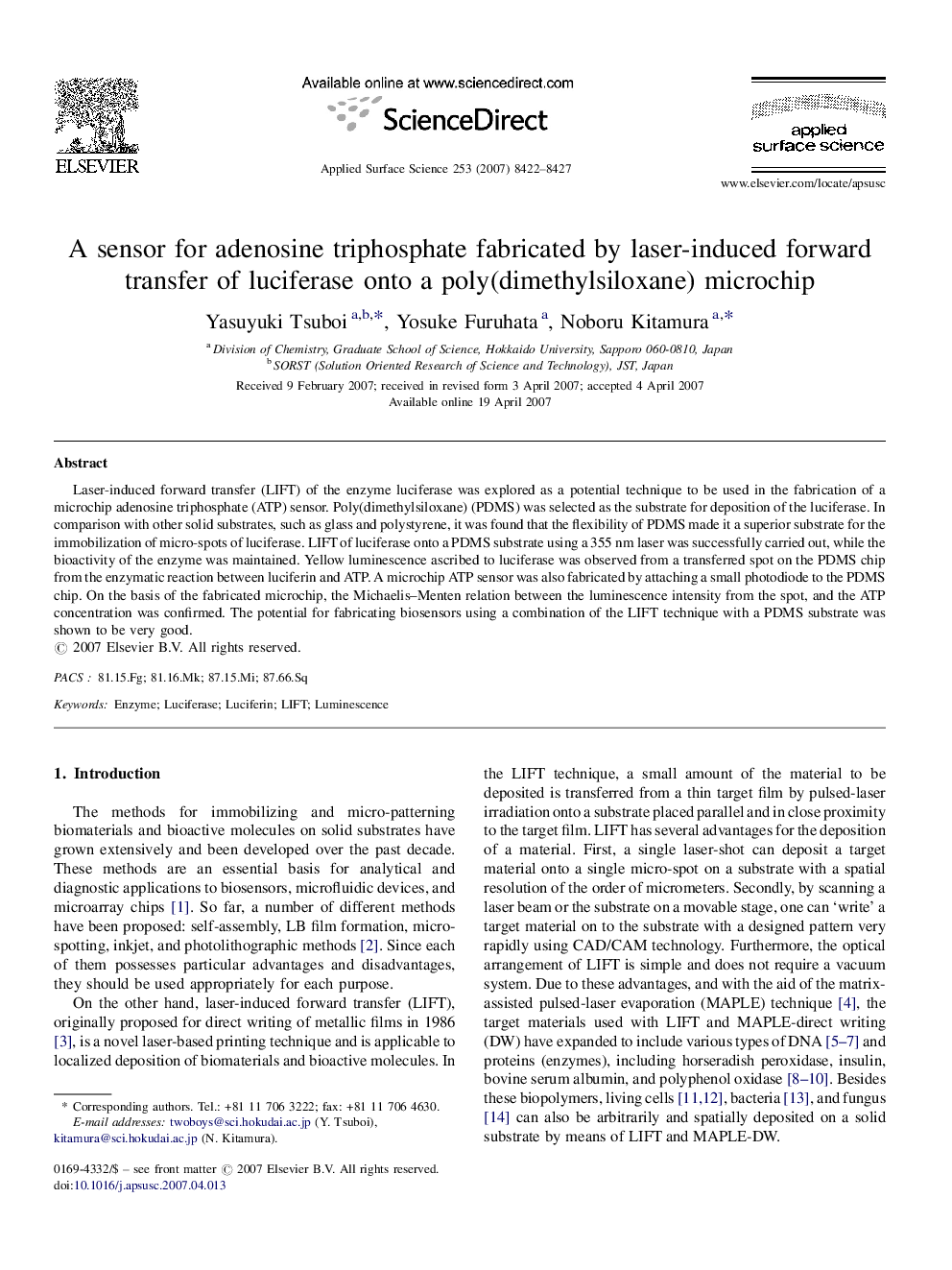| Article ID | Journal | Published Year | Pages | File Type |
|---|---|---|---|---|
| 5366745 | Applied Surface Science | 2007 | 6 Pages |
Laser-induced forward transfer (LIFT) of the enzyme luciferase was explored as a potential technique to be used in the fabrication of a microchip adenosine triphosphate (ATP) sensor. Poly(dimethylsiloxane) (PDMS) was selected as the substrate for deposition of the luciferase. In comparison with other solid substrates, such as glass and polystyrene, it was found that the flexibility of PDMS made it a superior substrate for the immobilization of micro-spots of luciferase. LIFT of luciferase onto a PDMS substrate using a 355Â nm laser was successfully carried out, while the bioactivity of the enzyme was maintained. Yellow luminescence ascribed to luciferase was observed from a transferred spot on the PDMS chip from the enzymatic reaction between luciferin and ATP. A microchip ATP sensor was also fabricated by attaching a small photodiode to the PDMS chip. On the basis of the fabricated microchip, the Michaelis-Menten relation between the luminescence intensity from the spot, and the ATP concentration was confirmed. The potential for fabricating biosensors using a combination of the LIFT technique with a PDMS substrate was shown to be very good.
